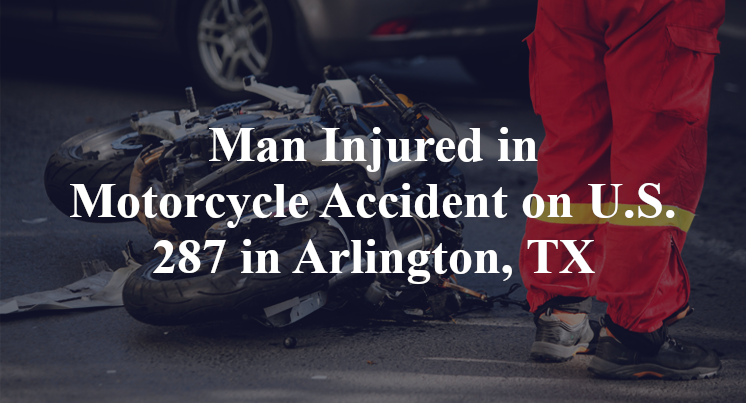Man Injured in Motorcycle Accident on U.S. 287 in Arlington, TX
Tarrant County, TX — August 15, 2024, a man was injured due to a single-vehicle motorcycle accident at approximately 10:30 p.m. along U.S. Highway 287.
According to authorities, a 26-year-old man was traveling on a northbound Yamaha motorcycle on U.S. 287 in the vicinity south of Santa Fe Drive when the accident took place.

Officials indicate that, for as yet unknown reasons, the motorcycle took a construction entrance into the median rather than following the curve of the active lanes of the highway. There, the motorcycle struck a raised drain and its barrier ropes.
The man reportedly suffered critical injuries over the course of the accident; he was transported to a local medical facility by EMS in order to receive immediate treatment. Additional details pertaining to this incident—including the identity of the victim—are not available at this point in time.
Commentary by Attorney Michael Grossman
Late-night motorcycle crashes often involve more than just a lapse in direction—they raise questions about visibility, vehicle behavior, and whether all systems were working as they should. When a rider ends up critically injured after veering into a construction area, the goal shouldn’t just be to explain what happened—it should be to understand why.
1. Did the authorities thoroughly investigate the crash?
In a single-vehicle incident where a motorcycle enters a construction median instead of following the highway, it’s fair to ask whether the scene was analyzed with that complexity in mind. Did investigators reconstruct the rider’s path and determine how far in advance he would’ve had to recognize the curve? Were measurements taken to establish whether the construction entrance was clearly distinguishable from the main lanes—especially at night? These are critical details, and yet, single-vehicle motorcycle crashes often receive only basic reviews.
2. Has anyone looked into the possibility that a vehicle defect caused the crash?
It’s not uncommon for riders to lose control at curves, but mechanical problems are often part of the story. Did the Yamaha have functioning headlights, responsive brakes, or proper tire pressure? Was there any issue with the throttle, steering, or suspension that made maneuvering through the curve more difficult than expected? Without a mechanical inspection, it's impossible to rule out failures that may have pushed the rider into the wrong path.
3. Has all the electronic data relating to the crash been collected?
While motorcycles generally don’t capture as much electronic data as cars, some modern bikes—or connected accessories like smart helmets or GPS units—do log speed, acceleration, and braking activity. This information could clarify whether the rider attempted to slow down or steer away before striking the drain. Surveillance footage or dashcams from nearby vehicles might also show exactly how the motorcycle entered the construction area. But if no one moved quickly to preserve that evidence, it may already be lost.
Crashes like this aren’t just about a rider taking a wrong turn—they’re about whether the vehicle responded properly, whether the environment was navigable, and whether anyone followed up to ask the hard questions afterward.
Takeaways:
- Single-motorcycle crashes deserve full scene analysis, especially when they involve construction areas.
- Mechanical failures may contribute to poor handling or delayed reaction in a curve.
- Limited digital data and nearby video footage can still be critical in reconstructing what really happened.

*We appreciate your feedback and welcome anyone to comment on our blog entries, however all visitor blog comments must be approved by the site moderator prior to showing live on the site. By submitting a blog comment you acknowledge that your post may appear live on the site for any visitors to see, pending moderator approval. The operators of this site are not responsible for the accuracy or content of the comments made by site visitors. By submitting a comment, blog post, or email to this site you acknowledge that you may receive a response with regard to your questions or concerns. If you contact Grossman Law Offices using this online form, your message will not create an attorney-client relationship and will not necessarily be treated as privileged or confidential! You should not send sensitive or confidential information via the Internet. Since the Internet is not necessarily a secure environment, it is not possible to ensure that your message sent via the Internet might be kept secure and confidential. When you fill out a contact or comment form, send us an email directly, initiate a chat session or call us, you acknowledge we may use your contact information to communicate with you in the future for marketing purposes, but such marketing will always be done in an ethical way.